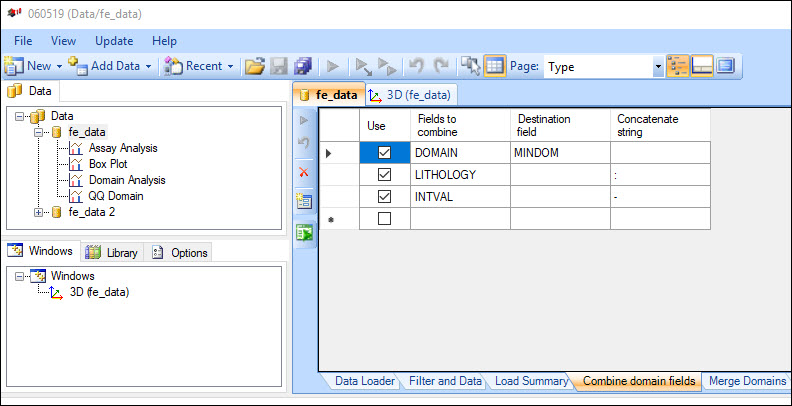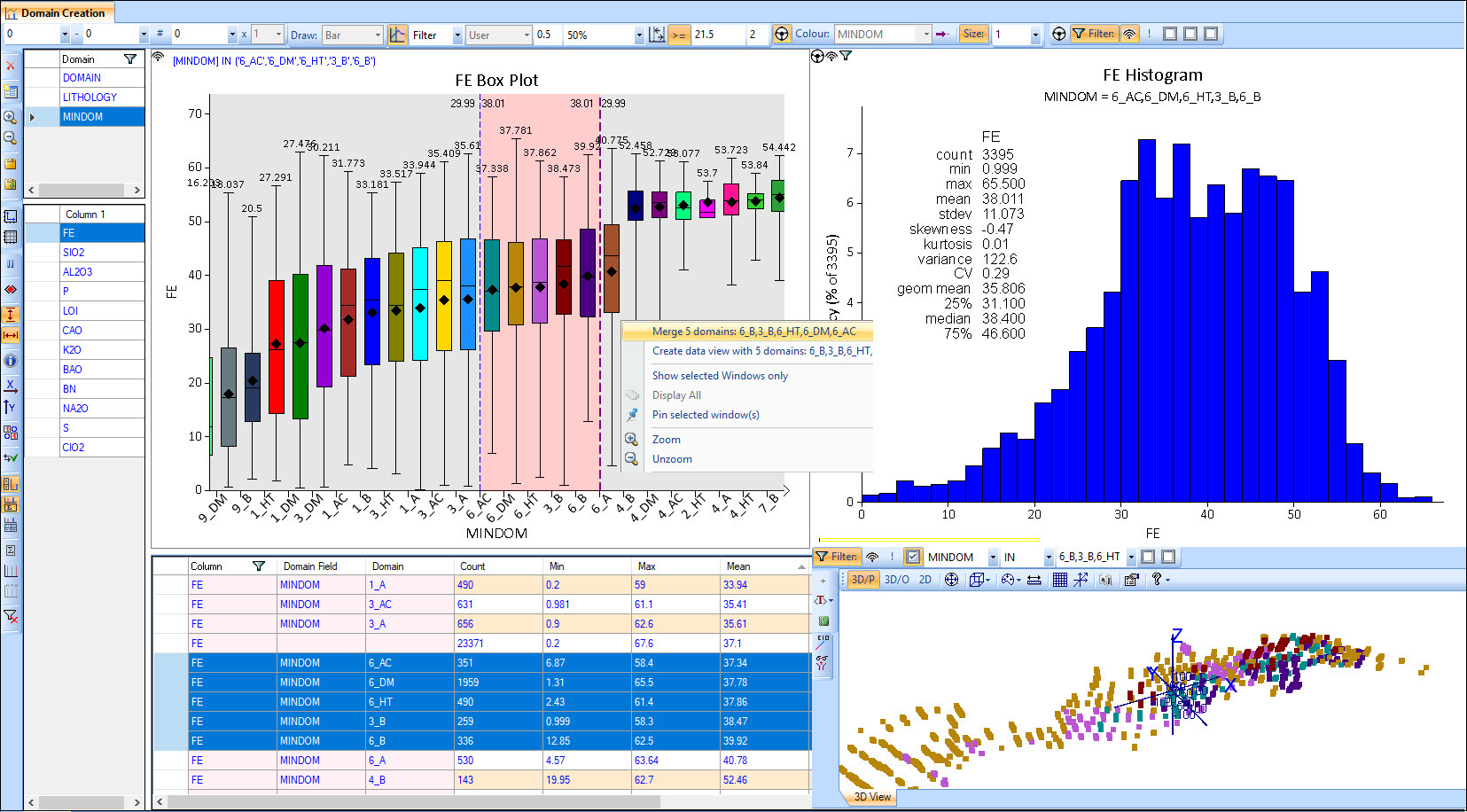The good news is we’ve recently added some exciting and unique new features to X10-Geo that will improve the way you do your domain analysis. We’ve now made it easy for you to create new domains from existing ones, by simply combining domain fields in tables or interactively merging domains from box plots or histograms. This saves you valuable time by removing the tedious process of editing or updating your domains in the raw data. You can then continue to refine your new domains as you work because they are updated instantly in our cutting-edge graph templates and check them in the 3D viewer at the same time to ensure they make sense spatially.
These are the new features we want to share with you:
• Create new domains using existing ones.
• Merge domains from graphs like Box and Whisker plots.
• Merge domains from the Domain Analysis graph or histograms.
• Combine data from two or more different components.
• Re-block an existing block model.
You can use these features in a number of helpful ways like combining and reducing the number of domains you have to work with or building up and breaking down domains to explore or simplify your data analysis. X10-Geo can easily create new single grade domain populations through merging and breaking down existing geological domains. We’ll be running through an example of how to do this in more detail in another post.
Now thanks to the new features in X10-Geo you can do much more than before while clearly simplifying and streamlining the processing of everyday data analysis tasks during EDA or resource estimation.
X10-Geo is already great at validating domains using templates like the Domain Analysis graph. This combines a number of different statistical measures with interactive graphs like histograms, Box and Whisper plots and QQ graphs. Basic functions to Merge Domains are also available in the domain analysis toolkit as well. However, we’d been thinking about adding some new options to X10-Geo for some time and after talking with one of our users, who wanted a better way to understand the controls on mineralisation in their Iron ore deposit, we decided to build them.
Lets look at these the new features in a bit more detail:
Create new domains
Firstly, you’ll notice that we’ve added the new Combine domains field page to the display window. Here, you will find a simple table where you select the domains you want to combine from an existing data set in the Data Tree. By selecting the domains from a list, then naming your new domain field and clicking the Combine domains button, you can merge your existing domains to create new ones . It’s as easy as that. Then check out the new domain data in the Filter and Data display page afterwards.
Check out the Combine domain fields display page:

Merge and create domains
We have some really successful template graphs, like the Box and Whisker plot, in X10-Geo that you can easily use to group and sort data. We thought it would be a really good idea if you could use these graphs in combination with our new Merge Domains property page to merge and create new domains interactively. You can now, for instance, build on the newly combined domains you have just created with a Box and Whisker plot from the Project Window using:
• On–graph sliders to group the statistically similar domains.
• The 3D visualiser to sanity check the new domains on the go.
• The new Merge Menu option to simply merge and name the domains you grouped with sliders and then store them in a new domain field.
• Automatically colour code all the new domains in the graph for visual analysis and to double check spatially with the 3D viewer.

This integrated graph shows you how to use on–graph sliders with the Box plot to group domains and then merge them using the new features selected from a drop down selection list. You can also select and add another graph like a histogram, as shown here, which updates dynamically as the domains are selected. The selected domains are highlighted in a data table and the 3D viewer automatically shows the updated domains spatially at the same time. Once the new domains have been created and colour coded you can then further investigate their controlling mechanisms.
The new Combine Data Function
You can now combine two or more data sets from different components in the Data Tree, like drill hole or assay files, and create a new component with your combined data. It’s easy to use the add Combine Data function in a dropdown menu from the Project Tree. You can then “lock” the combined data to make a static copy (like a “snapshot”) or have it update to any changes to the underlying data sets. Once you have created a Combined data component you can use graphs and other data analysis components to work with the new data.
The Re-blocking function
We have also developed a new re-blocking function in the Block Model property window that you can easily use to create blocks with larger dimensions in a new model that can then be exported as a CSV file. This can help you reduce the over-smoothing effects of smaller blocks in the resource model or you can export the resulting CSV file to use in pit optimisation runs.


